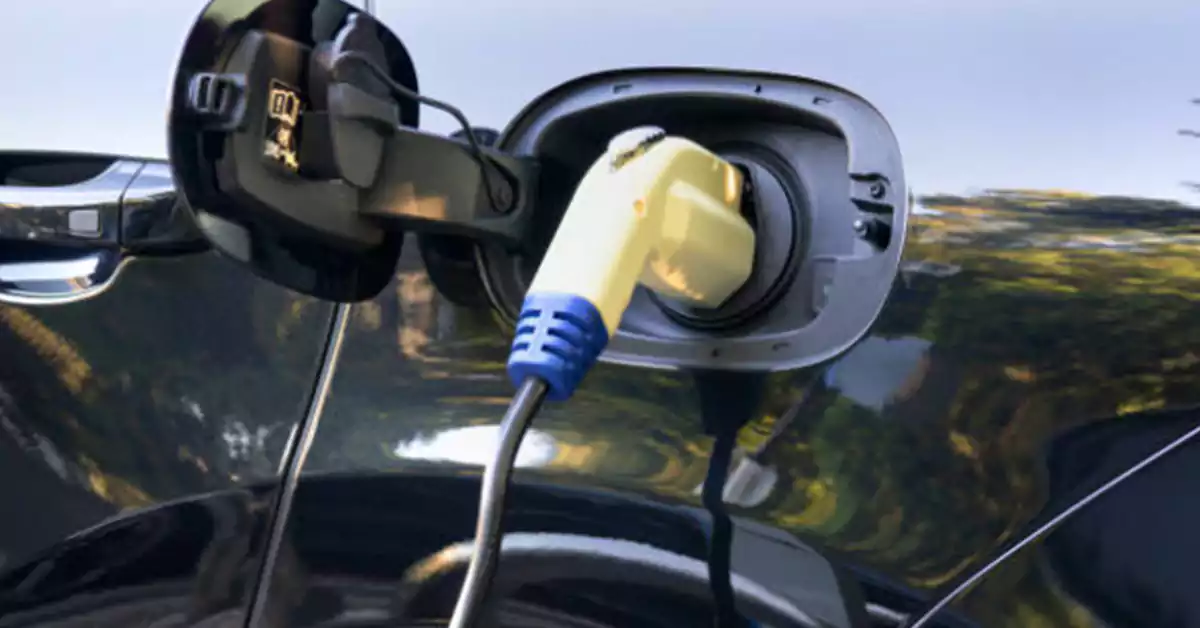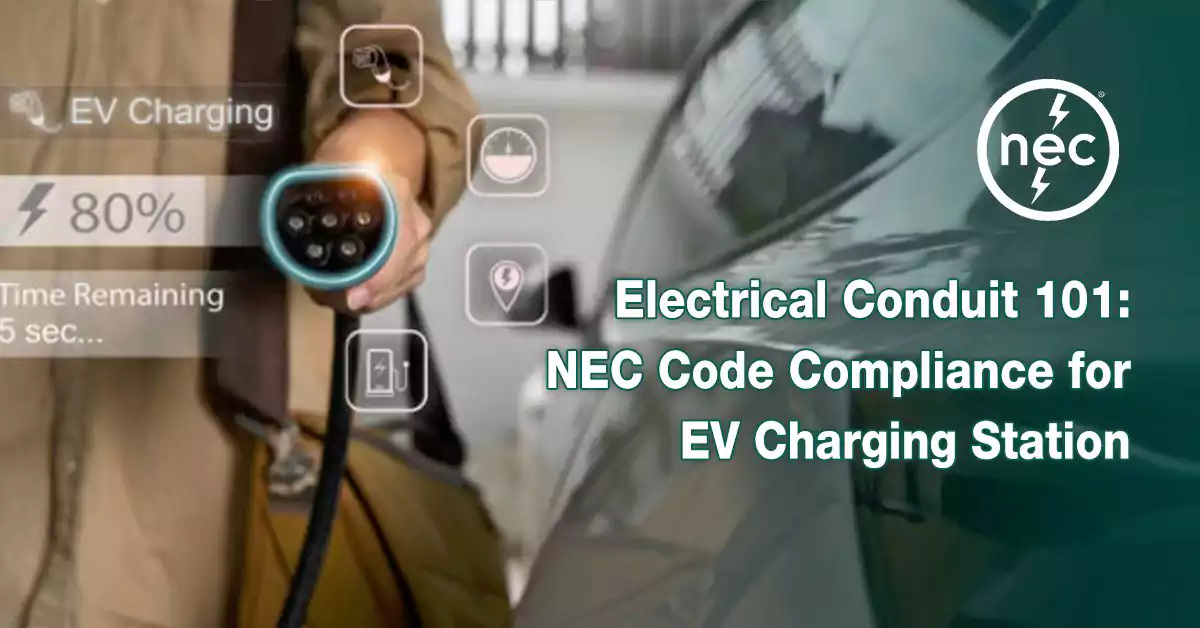
Índice
Com o aumento da popularidade dos veículos elétricos (VEs), a necessidade de uma infraestrutura de carregamento eficiente, segura e em conformidade com as normas tornou-se fundamental. Um componente essencial dessa infraestrutura é o conduíte elétrico, que protege a fiação que conecta os carregadores de VEs às fontes de energia elétrica. Nos Estados Unidos, o Código Elétrico Nacional (NEC) Estabelece as normas que garantem a instalação e o uso seguros de sistemas elétricos, incluindo os de estações de carregamento de veículos elétricos.
Neste guia, exploraremos os requisitos mais recentes do NEC (Código Elétrico Nacional) para estações de carregamento de veículos elétricos, oferecendo uma compreensão abrangente das normas que regem sistemas de conduítes, fiação e medidas de segurança. Seja você um empreiteiro elétrico, engenheiro ou gerente de instalações, este artigo o ajudará a navegar pelas complexidades da conformidade com o NEC para estações de carregamento de veículos elétricos.
O Código Elétrico Nacional (NEC), também conhecido como NFPA 70, é um conjunto de normas estabelecidas pela Associação Nacional de Proteção contra Incêndios (NFPA) para garantir a instalação segura de fiação e equipamentos elétricos. A conformidade com o NEC é crucial para prevenir incêndios elétricos, minimizar riscos e garantir que os sistemas elétricos operem de forma eficiente e segura.
Com o aumento da adoção de veículos elétricos, as normas do NEC (Código Elétrico Nacional) relativas às estações de carregamento de veículos elétricos tornaram-se parte essencial do projeto de sistemas elétricos. O NEC é atualizado a cada três anos, sendo a edição mais recente a NEC 2023. Esta edição introduz novas regras e requisitos focados especificamente na instalação e operação seguras de estações de carregamento de veículos elétricos, levando em consideração o rápido crescimento da infraestrutura de carregamento de veículos elétricos nos setores residencial e comercial.
As estações de carregamento de veículos elétricos exigem sistemas de conduítes robustos e confiáveis para proteger a fiação elétrica contra danos físicos, riscos ambientais e potenciais incêndios. Selecionar o tipo certo de conduíte É essencial tanto para a conformidade com o NEC quanto para a segurança da instalação a longo prazo.
O RMC é uma das opções de conduíte mais duráveis, fabricado em aço ou alumínio. Oferece excelente proteção mecânica e é frequentemente utilizado em instalações industriais e comerciais de estações de carregamento de veículos elétricos, onde se prevê exposição a ambientes agressivos, como áreas externas ou de grande circulação.
- Requisitos da NEC: De acordo com Artigo 344 da NEC, Os tubos RMC devem ser devidamente aterrados para evitar riscos de choque elétrico. Podem ser utilizados tanto em instalações aéreas quanto subterrâneas, mas exigem conexões e vedação adequadas para proteção contra umidade.
- Vantagens: Alta durabilidade, excelente proteção contra corrosão (no caso de aço galvanizado ou alumínio) e forte resistência física a impactos.
O eletroduto EMT é mais fino e leve em comparação com o RMC, geralmente feito de aço ou alumínio. O EMT é comumente usado em ambientes internos ou protegidos e é mais econômico para determinadas instalações.
- Requisitos da NEC: Sob Artigo 358 da NEC, O eletroduto EMT deve ser aterrado e conectado adequadamente para garantir a segurança. É mais indicado para uso em ambientes internos ou externos com exposição mínima a danos físicos.
- Vantagens: Leve e mais fácil de instalar em comparação com o concreto pré-moldado. Também é mais econômico e menos exigente em termos de ambiente.
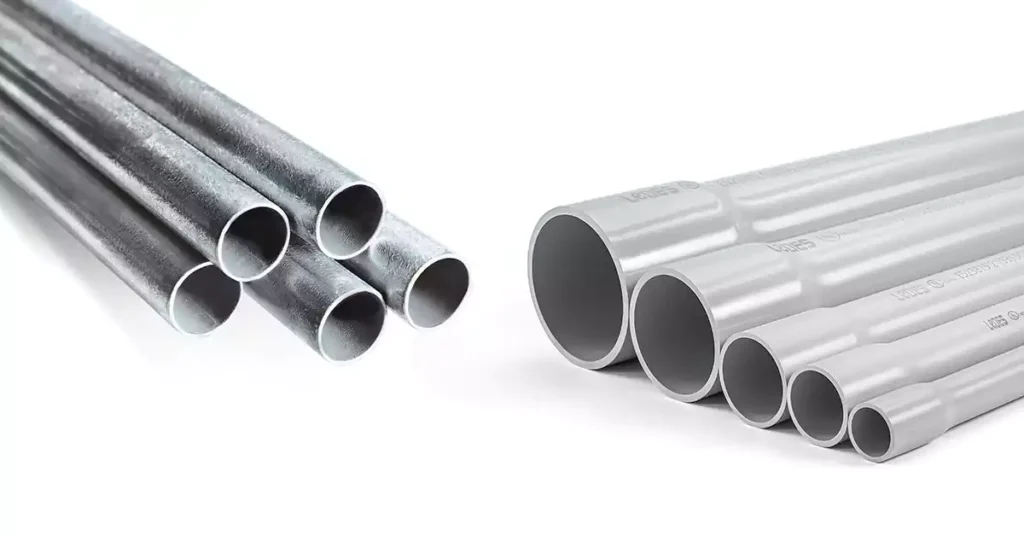
Os conduítes de PVC são amplamente utilizados tanto em instalações acima do solo quanto subterrâneas devido à sua resistência à corrosão e preço acessível. Anexo 40 é mais fino e é usado para aplicações de uso geral, enquanto Anexo 80 É mais espessa e oferece maior proteção contra danos físicos, sendo ideal para áreas de grande circulação perto de estações de carregamento de veículos elétricos.
- Requisitos da NEC: Artigo 352 da NEC descreve o uso de sistemas de conduítes de PVC. Esses conduítes devem ser instalados com conexões apropriadas e suportados em intervalos especificados para evitar flacidez ou movimentação. O PVC Schedule 80 é obrigatório para instalações onde o conduíte está exposto a possíveis danos, como próximo a estações de carregamento de veículos elétricos localizadas em estacionamentos ou entradas de garagem.
- Vantagens: Resistente à corrosão, leve e fácil de instalar. Adequado tanto para instalações subterrâneas quanto expostas.
Especificação | Anexo 40 | Anexo 80 |
Referência NEC | Artigo 352 da NEC | Artigo 352 da NEC |
Profundidade mínima de enterramento | 18 polegadas | 18 polegadas |
Aplicações | Subterrâneo ou exposto | Áreas de grande circulação |
Resistência a danos físicos | Moderado | Alto |
Os condutos flexíveis, como os condutos flexíveis não metálicos à prova de líquidos (LFNC), são frequentemente usados em áreas onde os condutos rígidos são impraticáveis, como em espaços apertados ou instalações que exigem movimentação ou vibração frequentes.
- Requisitos da NEC: Sob Artigo 356 da NEC, O tubo LFNC deve ser suportado e instalado de forma a evitar dobras ou danos. Geralmente, é reservado para seções mais curtas que exigem flexibilidade.
- Vantagens: Flexibilidade, facilidade de instalação e excelente proteção contra umidade.
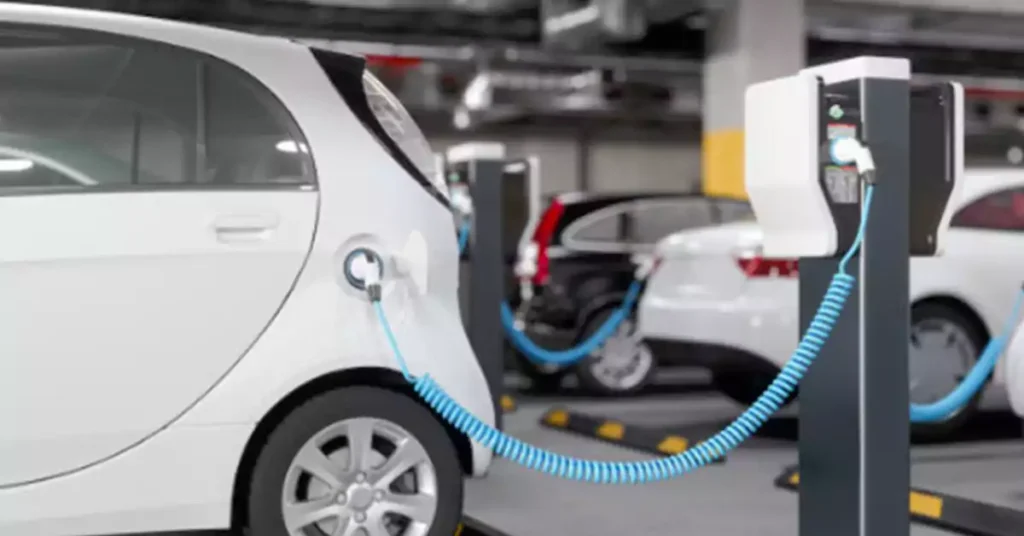
O NEC inclui diretrizes específicas para infraestrutura de carregamento de veículos elétricos, principalmente abordadas no Artigo 625, que rege a instalação de sistemas de transferência de energia para veículos elétricos. Compreender esses requisitos é fundamental para garantir a segurança e a conformidade ao instalar uma estação de carregamento de veículos elétricos.
Circuitos dedicados: Os carregadores de veículos elétricos devem ser conectados a circuitos dedicados, separados das demais cargas da residência ou do edifício. Isso garante que o circuito não fique sobrecarregado e reduz o risco de desarme dos disjuntores.
Proteção contra sobrecorrente: Os equipamentos de carregamento de veículos elétricos devem possuir proteção adequada contra sobrecorrente, dimensionada de acordo com as especificações do fabricante e as tabelas de capacidade de corrente da NEC (Tabela 310.16 da NEC).
Meios de desconexão: Um meio de desconectar o equipamento de carregamento de veículos elétricos da fonte de energia deve ser instalado em um local visível da estação de carregamento. Isso permite que a equipe de manutenção desenergize o sistema com segurança, se necessário.
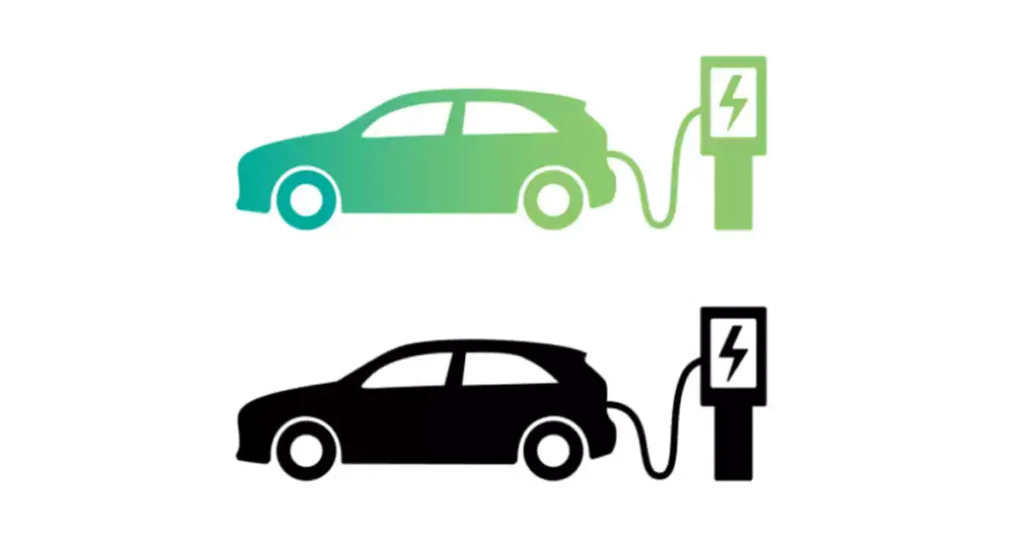
O Artigo 625 estabelece um conjunto abrangente de regras específicas para sistemas de carregamento de veículos elétricos, incluindo os seguintes pontos principais:
Circuitos de ramificação: Todos os equipamentos de carregamento de veículos elétricos devem ser instalados em um circuito derivado dedicado, separado de outras cargas, para evitar interferências e possíveis sobrecargas.
Avaliação: O equipamento deve ser dimensionado para os níveis de tensão e corrente esperados durante a operação normal. Para instalações residenciais, isso normalmente varia de 120 V a 240 V, enquanto instalações comerciais ou de carregamento rápido podem operar com 480 V ou mais.
Métodos de fiação: A NEC exige o uso de métodos e materiais de fiação listados, como aqueles aprovados para locais úmidos, quando o conduíte é instalado no subsolo ou ao ar livre.
Proteção contra falhas de aterramento: A proteção contra falhas de aterramento é necessária em sistemas de carregamento de veículos elétricos para minimizar o risco de choque elétrico. A proteção GFCI é particularmente importante em ambientes externos ou úmidos.
Requisitos de ventilação: Se o sistema de carregamento de veículos elétricos for instalado em um local com ventilação limitada (como uma garagem), deve-se providenciar ventilação adequada para evitar o acúmulo de gases inflamáveis, especialmente em sistemas de carregamento com bateria de reserva.
O dimensionamento correto dos eletrodutos é essencial para garantir que os condutores elétricos em seu interior tenham espaço suficiente para dissipação de calor e circulação de ar. O NEC (Código Elétrico Nacional) fornece diretrizes detalhadas sobre como calcular o preenchimento e a capacidade de condução de corrente dos eletrodutos.
- Determinação da bitola do fio com base na demanda atual
A bitola do fio é determinada pela sua capacidade de condução de corrente — a quantidade de corrente que um fio pode suportar com segurança. O NEC (Código Elétrico Nacional) fornece diversas tabelas que podem ser usadas para determinar a bitola adequada do condutor com base na carga esperada. Por exemplo, um carregador de veículos elétricos de Nível 2 normalmente requer 240 volts e 40 amperes, o que significa que um fio de cobre de 6 AWG seria necessário para uma capacidade de condução de corrente adequada.
- Cálculos de queda de tensão
Percursos longos de eletrodutos podem levar a quedas de tensão significativas, o que reduz a eficiência do carregamento. O NEC recomenda limitar a queda de tensão a menos de 3% para um desempenho ideal. Os instaladores devem compensar as longas distâncias aumentando a bitola do fio ou escolhendo eletrodutos maiores. Para manter a eficiência e evitar o superaquecimento, o NEC recomenda limitar a queda de tensão a 3% para circuitos derivados. A queda de tensão pode ser calculada usando a fórmula:
Para sistema monofásico: Queda de tensão = (2 × Comprimento × Corrente × Resistividade)//1000
Para sistema trifásico: Queda de tensão = (1,73 × Comprimento × Corrente × Resistividade)//1000
Se a queda de tensão exceder 3%, um condutor de maior diâmetro pode ser necessário para reduzir a resistência e melhorar o desempenho.
- Fatores de redução de potência para sistemas de conduítes
O NEC impõe limites à quantidade de condutores que podem ser colocados em um único eletroduto. O preenchimento excessivo de um eletroduto pode resultar em acúmulo excessivo de calor, o que reduz a capacidade de condução de corrente dos condutores. A Tabela 310.15(B)(3)(a) do NEC fornece fatores de redução de capacidade para diferentes cenários de preenchimento de eletrodutos.
Número de condutores | Percentagem de valores em Tabela 310.15(B)(16) Através Tabela 310.15(B)(19) Ajustado à temperatura ambiente, se necessário. |
4-6 | 80 |
7-9 | 70 |
10-20 | 50 |
21-30 | 45 |
31-40 | 40 |
41 anos ou mais | 35 |
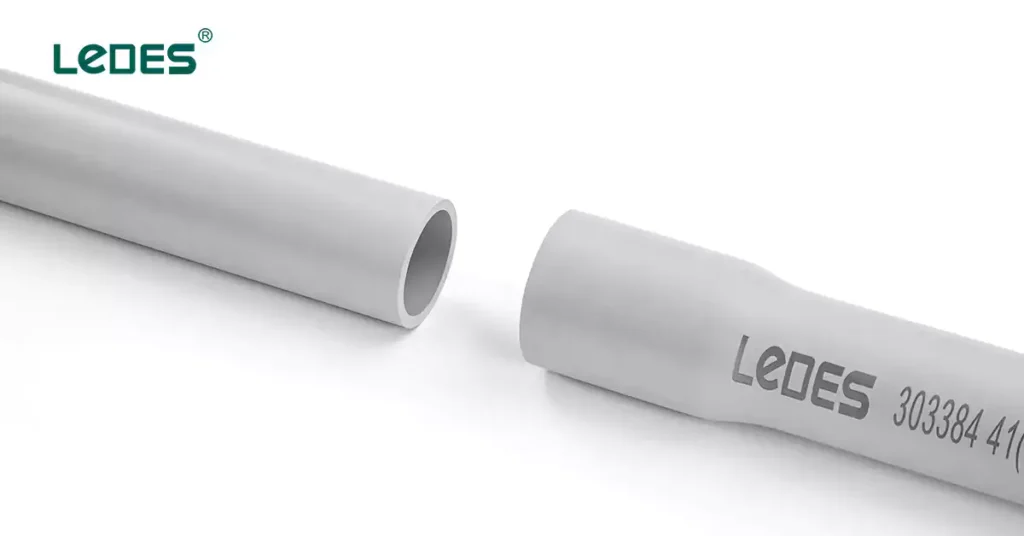
Práticas de instalação adequadas são essenciais para manter a segurança e a funcionalidade do sistema de carregamento de veículos elétricos. Isso inclui seguir as diretrizes do NEC (Código Elétrico Nacional) para suporte, curvatura e espaçamento de conduítes.
Em estações de carregamento de veículos elétricos ao ar livre, os condutos são frequentemente enterrados para protegê-los de danos físicos e fatores ambientais. O Artigo 300 do NEC (Código Elétrico Nacional) fornece orientações detalhadas sobre as profundidades mínimas de enterramento exigidas para diferentes tipos de condutos.
- Eletroduto metálico rígido (RMC): A profundidade mínima de enterramento é de 6 polegadas para instalações residenciais e 18 polegadas para instalações não residenciais.
- Conduíte de PVC: A profundidade mínima de enterramento é de 18 polegadas para instalações residenciais e 24 polegadas para instalações não residenciais.
- Tubo Elétrico Metálico (EMT): Normalmente utilizado para instalações acima do solo, como em paredes ou tetos. O NEC exige uma profundidade mínima de cobertura de 45,7 cm (18 polegadas) tanto para instalações residenciais quanto não residenciais.
O Artigo 352.26 do NEC especifica que as curvas dos eletrodutos de PVC não devem exceder um total de 360 graus entre os pontos de tração para minimizar a tensão nos condutores. RMC refere-se ao Artigo 344.24 e EMT ao Artigo 358.24. Além disso, o NEC define os requisitos para o suporte dos eletrodutos em intervalos regulares.
Diâmetro do conduíte (polegadas) | Espaçamento máximo entre suportes (pés) |
1/2 – 1 | 3 |
1-1/4 – 2 | 5 |
2-1/2 – 3 | 6 |
3-1/2 – 5 | 7 |
6 | 8 |
Diâmetro do conduíte (polegadas) | Espaçamento máximo entre suportes (pés) |
1/2 – 3/4 | 10 |
1 | 12 |
1-1/4 – 1-1/2 | 14 |
2 – 2-1/2 | 16 |
3 e maior | 20 |
Para instalações externas expostas a variações extremas de temperatura, juntas de dilatação devem ser instaladas para acomodar a expansão térmica e evitar danos aos conduítes. O Artigo 352.44 do NEC (Código Elétrico Nacional) aborda os requisitos para juntas de dilatação em sistemas de conduítes de PVC.
O aterramento é um aspecto crítico da conformidade com o NEC (Código Elétrico Nacional) para estações de carregamento de veículos elétricos, fornecendo um caminho seguro para correntes de falha e minimizando o risco de choque elétrico.
Os sistemas de carregamento de veículos elétricos devem ser conectados a um sistema de aterramento, conforme especificado no Artigo 250 do NEC (Código Elétrico Nacional). Isso inclui a ligação do equipamento ao sistema de aterramento existente do edifício ou a instalação de um novo eletrodo de aterramento, se necessário.
Para proteção contra choques elétricos, os dispositivos GFCI devem ser instalados em áreas com presença de água ou umidade, como estações de carregamento de veículos elétricos ao ar livre. O Artigo 210.8 do NEC (Código Elétrico Nacional) aborda os requisitos para GFCI, garantindo que todas as tomadas que alimentam carregadores de veículos elétricos estejam protegidas.
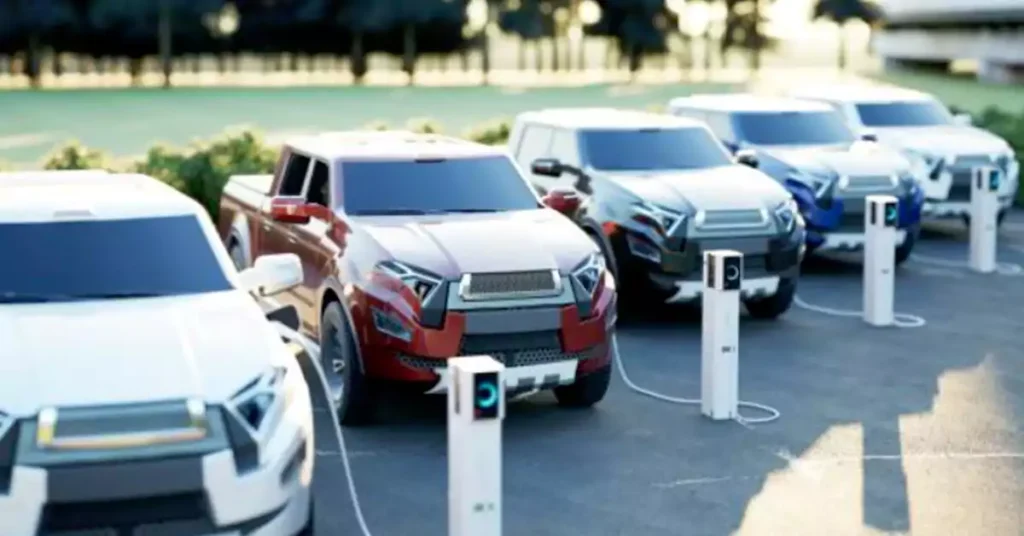
Os conduítes ficam frequentemente expostos a potenciais danos durante a construção, principalmente quando instalados em áreas de grande circulação ou no subsolo. Máquinas pesadas, queda de detritos ou manuseio inadequado podem causar rachaduras ou deformações nos conduítes, comprometendo a fiação e representando riscos à segurança.
Reforço e montagem: A fixação adequada dos eletrodutos em áreas vulneráveis pode reduzir o risco de danos. Utilize abraçadeiras e suportes para eletrodutos conforme o Artigo 344.30 da NEC (Norma Elétrica Nacional) para garantir que os eletrodutos estejam firmemente fixados e resistentes a impactos físicos.
Revestimentos de proteção: Para instalações subterrâneas, considere o uso de mangas ou revestimentos protetores para eletrodutos, a fim de evitar possíveis danos causados por escavações ou equipamentos pesados. Em instalações de superfície, instale postes de proteção ou barreiras para proteger os eletrodutos expostos de impactos diretos.
A comunicação com outros profissionais (como escavadores e construtores) durante as fases de construção é essencial para minimizar os riscos aos condutos instalados. Certifique-se de que as áreas demarcadas e os mapas dos sistemas de condutos subterrâneos estejam acessíveis para evitar danos acidentais.
As estações de carregamento de veículos elétricos lidam com cargas elétricas significativas, o que pode aumentar o risco de superaquecimento e incêndio se as medidas de segurança adequadas não forem implementadas. A escolha de materiais de conduíte resistentes ao fogo é um aspecto crucial para garantir a segurança geral desses sistemas.
A resistência ao fogo em materiais de conduítes ajuda a conter incêndios e a impedir sua propagação. Dois materiais comumente usados que atendem aos padrões de segurança contra incêndio são:
- PVC (Cloreto de Polivinila): Embora os conduítes de PVC sejam não metálicos e ofereçam excelente resistência à corrosão, algumas variedades também são resistentes ao fogo. O PVC possui propriedade autoextinguível, o que significa que ele para de queimar assim que a fonte do incêndio é removida. Além disso, o PVC Schedule 80 oferece espessura extra para melhor proteção em ambientes de alto risco.
- RMC (Eletroduto Metálico Rígido): Os eletrodutos RMC, fabricados em aço galvanizado ou alumínio, oferecem proteção robusta contra incêndio e danos físicos. O aço possui um ponto de fusão mais elevado em comparação com eletrodutos não metálicos, tornando-o mais resistente ao fogo.
Os materiais dos conduítes devem atender a padrões específicos da Underwriters Laboratories (UL) para garantir resistência ao fogo. Procure por conduítes com a seguinte certificação: Classificação UL 94 e UL651, which measures the flammability of plastic materials for parts in devices and appliances. For metallic conduits, UL 6 and UL 514 standards address fire resistance and general safety.
Material | Resistência ao fogo | Artigo da NEC | UL Standard |
PVC (Schedule 40/80) | Autoextinguível | Artigo 352 da NEC | UL 94, UL 651 |
RMC (Steel/Aluminum) | High melting point | Artigo 344 da NEC | UL 6, UL 514 |
Voltage drop is a common issue in large installations or when the charging station is located far from the main electrical panel. To mitigate this, installers can use larger gauge wires or add additional charging stations closer to the power source.
Another common mistake is overfilling conduits with too many conductors, which leads to overheating. Using larger conduit sizes or multiple conduit runs can alleviate this issue and ensure proper heat dissipation.
With the rapid development of EV technologies, it’s important to design charging stations with the future in mind. This could include:
Increased Capacity: Installing conduit and wiring that can handle future upgrades, such as additional charging stations or faster chargers.
Smart Charging Systems: These systems can optimize energy usage by adjusting the charging rate based on grid demand, which can help avoid expensive utility charges.
How to Install a Home EV Charging Station?
Installing a home EV charging station, especially a Level 2 charger, involves several steps to ensure a safe and efficient setup that meets electrical code requirements. Here’s a step-by-step guide:
- Assess Electrical Capacity:
Most Level 2 chargers require a dedicated 240V circuit, typically between 30-50 amps. Check your home’s electrical panel to determine if there’s enough capacity. Older homes might need a panel upgrade to handle the additional load.
- Choose the Right Location:
Select a location near your parking spot for convenient access, usually in a garage or driveway. Ensure that the charging cable can comfortably reach your EV without being stretched or coiled.
- Select the Charging Station:
Decide on the type of charger. A Level 2 charger will provide faster charging (usually adding 20-40 miles of range per hour), and many models come with Wi-Fi for remote monitoring. Check that the charger is UL-listed and compatible with your EV model.
- Install Conduit and Wiring:
If required by local codes, run conduit from the electrical panel to the charger location. PVC conduit or EMT (electrical metallic tubing) can protect wiring, especially in exposed or outdoor areas.
Use the appropriate wire gauge for the circuit amperage, as per the National Electrical Code (NEC). For a 40-amp circuit, typically a 6 AWG copper wire is used.
- Install the Charger:
Mount the charging unit on the wall following the manufacturer’s guidelines. This usually involves drilling pilot holes and securing the charger with screws and wall anchors.
Connect the wires to the charging station. This part is typically best left to a licensed electrician to ensure connections are safe and meet code requirements.
- Test the System:
After installation, test the charging station to ensure it’s functioning correctly. This involves connecting the EV and verifying that it charges without issues or fault indicators.
- Permits and Inspections:
Many areas require permits and inspections for EV charger installations to verify they meet local electrical codes. Check with your local municipality, and schedule any necessary inspections after installation.
By following these steps, homeowners can install a safe, reliable charging station that complies with electrical codes.
What Are the Challenges of Installing an EV Charger at Home?
- Electrical Panel Capacity:
One of the biggest challenges is determining if your home’s electrical panel has enough capacity to support an EV charger. Homes with outdated or undersized panels may require costly upgrades, adding to the installation cost and time.
- Permits and Inspections:
Homeowners must often obtain permits and schedule inspections, which can vary by locality. Navigating these requirements can be confusing and time-consuming, especially if local inspectors have specific requirements for EV chargers.
- Wiring and Circuit Requirements:
Installing an EV charger requires a dedicated circuit, typically 240V, with the correct amperage. Selecting the right wire gauge and conduit is crucial to prevent overheating, but this can be challenging for those unfamiliar with electrical codes.
- Choosing the Right Charging Location:
Finding a spot that is accessible, close to the parking area, and safe from weather elements can be tricky. Outdoor installations, in particular, require weatherproofing and potentially a more robust conduit to protect the wiring from environmental factors.
- Custos de instalação:
Costs can add up, particularly if significant upgrades to the electrical system are required. Electricians typically charge a premium for installing EV chargers, and extra costs for conduit, protective covers, and outlet upgrades can increase the total expense.
- Future-Proofing Considerations:
With EV technology advancing, some homeowners might wish to future-proof their installation for higher-capacity chargers. While beneficial in the long run, this increases the upfront cost and complexity as it may require larger wiring, conduit, and panels.
Despite these challenges, working with a licensed electrician and carefully planning the installation can help create a convenient, efficient charging setup for home EV charging.
Conclusão
Understanding and complying with the NEC is crucial for the safe installation of EV charging stations. The code’s detailed guidelines on conduit types, wiring methods, grounding, and protection ensure that charging stations are not only efficient but also safe for both users and the surrounding environment. By following NEC requirements and best practices, electrical professionals can ensure that their EV charging installations meet today’s needs while being prepared for the future of electric mobility.



